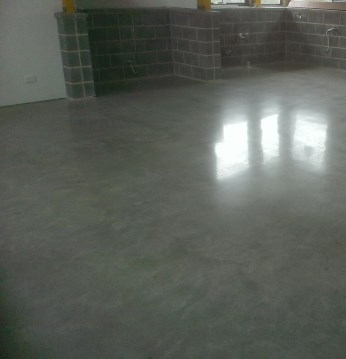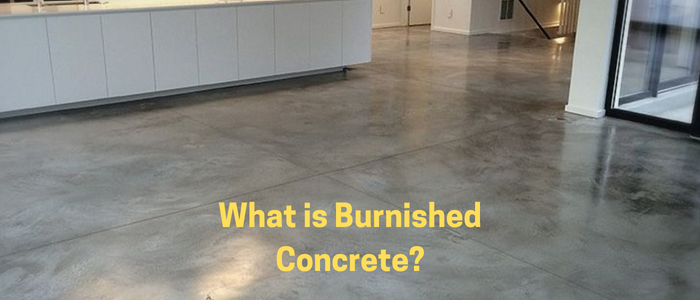What is Burnished Concrete?
Have you ever encountered a concrete surface like this one? and wondered how it is made?

In this post, we simply answer this question of what is this type of concrete?
This type is called Burnished Concrete.
What is Burnished Concrete?
Burnished concrete is the polished concrete finish where there is no aggregate exposed. This type of concrete finishing gives a hard surface that is good looking and durable against wear; thus, making burnished concrete suitable for residential and commercial buildings.
What is Burnishing?
Concrete burnishers are mechanical devices that spin similarly to concrete grinders. They are sometimes known as power trowels or helicopters (so named for their rotating blades).
The power of burnishers is insufficient to grind down a concrete surface. They are employed to heat, melt, and buff a coating that has been put to a surface. The chemical coating, which is frequently a wax-based material, melts into the concrete pores on the surface.
When burnishing concrete, a densifier can be used to provide the surface some of the same qualities as mechanical finishes, such as shine, hardness, and durability. However, it’s simple to do it incorrectly, and if you mess up the installation, it won’t turn out quite as well as you had hoped.
So, how can we achieve this surface finishing? There are few steps to follow.
How to Make Burnished Concrete?
Step 1:
During the concrete casting, make sure to level the surface as much as you can. This is a must because when creating the burnished concrete, we do not remove any existing materials from the concrete surface.
This mean that if there are originally highs and lows in the concrete surface after casting, they will also remain in the burnished surface.
Step 2:
The polishing begins as the contractor uses the helicopter to burnish the concrete surface until it turns black. Then, cure the concrete for two weeks.
Step 3:
After concrete cures for two week, we continue the polishing process. The concrete strength is important for burnishing. Any value above 32 MPa is enough for a burnished finish.
Precautions for Burnishing
Note that it is important to polish the concrete before the continuation of the building process.
The building process can cause stains on the concrete surface that can not be removed with polishing. This means you will find discolouration on the concrete surface that you can not remove. Also, if you tried to remove this discolouration using a heavy grinder, you will expose the aggregate.
Thus, complete the polishing first of the floor. Another benefit for this in addition to the prevention of discolouration and less risk that the floor will be contaminated is that no walls will exist to hinder your work; thus, you will get a better finish
Once polished, the floor is sealed and become reasonably damage resistant. It is crucial that the builder safeguards the floor during the remaining construction.
Keeping a clean job site is the greatest approach to safeguard the floor. Simple cleaning, sweeping, or blowing pollutants debris and dirt off the concrete is required before walls and a roof are constructed.
Avoid leaving screws and nails where they might rust due to moisture.
Avoid storing lumber there so that it can become wet and leach tannin.
The floor can be protected by covering when walls and a roof have been put in place.
Read Also:
